Thank you for your interest in PRECS. This program is no longer running, but you might be interested in a new program that is replacing PRECS, MICRO-CCS.
Dr. Lisa Ainsworth

Dr. Lisa Ainsworth investigates plant responses to global atmospheric change, including rising carbon dioxide and ozone concentrations. Dr. Ainsworth’s laboratory quantifies genetic variation in response to elevated ozone concentrations among diverse inbred and hybrid maize and soybean lines. The laboratory is also developing and using high-throughput phenotyping techniques to identify ozone sensitivity in maize and soybean, and identifying the genes and gene networks underpinning the ozone response in maize and soybean. The PRECS participant will investigate physiological responses of maize and soybean to climate change at the SoyFACE facility.
Dr. Alison Bell
 The laboratory of Dr. Alison Bell is interested in consistent individual differences in behavior. The Bell laboratory studies the proximate and ultimate causes of individual differences in threespined stickleback fish. Ongoing projects investigate transgenerational plasticity, brain gene expression correlates and causes of behavior, and the factors that can maintain individual differences within natural populations. The PRECS participant will use a combination of behavioral experiments and in situ histochemistry experiments to link genes and behavior.
The laboratory of Dr. Alison Bell is interested in consistent individual differences in behavior. The Bell laboratory studies the proximate and ultimate causes of individual differences in threespined stickleback fish. Ongoing projects investigate transgenerational plasticity, brain gene expression correlates and causes of behavior, and the factors that can maintain individual differences within natural populations. The PRECS participant will use a combination of behavioral experiments and in situ histochemistry experiments to link genes and behavior.
Dr. May Berenbaum

Dr. May Berenbaum’s research is focused on chemical ecology, specifically in examining how natural and synthetic chemicals affect interactions between plant-feeding insects and the plants they consume. Current projects are examining how honey bees detoxify the phytochemicals and pesticides they encounter in nectar and pollen, how parsnip webworm caterpillars influence the chemical defenses of the wild parsnip throughout their range in Europe, where they are native, and in the USA, where they are invasive, and whether the navel orangeworm caterpillar depends on a fungal mutualist to detoxify phytochemicals in the many species of tree crop fruits and nuts that they attack throughout its range. She is also interested in finding practical applications of her research findings in developing sustainable management practices for natural and agricultural communities. PRECS participants will be involved in learning techniques for and carrying out behavioral, biochemical, phytochemical, and molecular assays with caterpillars and bees.
Dr. Steven Burgess
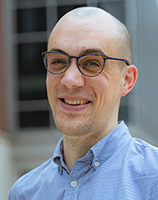
Dr. Steven Burgess aims to provide a sustainable ecosystem for future generations, by working openly and collaboratively with synthetic biology tools to simplify, miniaturize and automate engineering of photosynthetic organisms. The Burgess lab is currently focused on understanding how photosynthesis is adapted to deal with environmental stress and how protein structure influences the activity of genes involved in photosynthesis. This work is important to improve crop yield and adapt modern varieties to future climatic conditions in the face of increasingly frequent extreme weather events. The PRECS participant will use a combination molecular and physiological techniques to investigate the efficiency of photosynthesis under conditions that simulate a heat wave.
Dr. Carla Cáceres
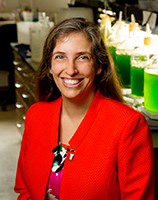
The lab of Dr. Carla Cáceres studies phenotypic plasticity in several species of the freshwater crustacean, Daphnia. Daphnia are facultative parthenogens, meaning they alternate between sexual and asexual reproduction. The Cáceres lab keeps dozens of genotypes in laboratory culture and raises them in different environments to ask how traits such as body size, swimming behavior, and susceptibility to common pathogens is influenced by genotype, environment, and their interaction. The PRECS participant will conduct a series of laboratory and possibly field experiments to understand how variation in phenotype is influenced by genetics and the environment.
Dr. Hee Jung Chung

The laboratory of Dr. Hee Jung Chung is interested in understanding the pathogenesis of epilepsy, a devastating common chronic brain disorder caused by excessive brain activity clinically characterized as seizures. About 40% of epilepsy is associated with genetic mutations in ion channels that generate electric current by mediating the flow of ions across the plasma membrane. The cause for the rest of epilepsy, but nonetheless a normal brain has changed to an epileptic brain with excessive electrical signals. Dr. Chung's research group focuses on understanding how epilepsy mutations affect ion channel function and lead to neuronal hyperactivity in inherited or de novo epilepsy, and identifying molecular mechanisms that persistently alter ion channel function to cause hyperactivity during the development of acquired epilepsy. The PRECS participant in the Chung laboratory will use a combination of fluorescence microscopy, molecular biology, and biochemistry to generate epilepsy mutations in ion channels and investigate whether these mutations disrupt their expression and localization within neurons.
Dr. Adam Dolezal
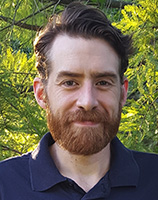
The Dolezal lab studies how bee physiology and behavior is affected by the stressors they encounter in their environment, namely pathogens, pesticides, and nutritional deprivation. By taking an integrative approach, the lab can study how these factors interact with each other at the landscape, colony, and individual scale. This work mostly focuses on honey bees, but also includes studies of how these factors affect other pollinators. Students in PRECS are likely to work on projects testing how bee physiology and behavior changes due to pesticides, pathogens, or other stressors.
Dr. Eva Fischer

Dr. Eva Fischer investigates how animal behavior is generated, maintained, and modified by evolution. The Fischer laboratory takes an integrative approach to address these questions across hierarchical levels of biological organization (from gene networks, to neural circuits, to hormones, to behavior) and timescales (from immediate, to developmental, to evolutionary). The laboratory uses charistimatic South American poison frogs as a model system and ongoing projects include characterizing the neural mechanisms of parental care, exploring how internal and external factors influence social decision-making, and understanding whether underlying mechanisms create trade-offs among different kinds of behavior (e.g. aggression, courtship, parental care). The PRECS participant will use a combination of behavioral experiments, immunohistochemistry, and gene expression analysis techniques to explore links between neural mechanisms and behavior.
Dr. Rebecca Fuller
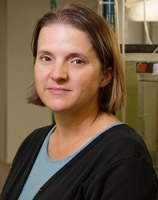 The laboratory of Dr. Rebecca Fuller focuses on how genetic variation, environmental variation, and their interaction contribute to the expression of color patterns, color vision, and mating preference in fishes. The Fuller laboratory primarily focuses on the bluefin killifish, a species that displays phenotypic plasticity in male coloration. Males of this species show a genotype by environment interaction in regards to tail fin color that is counterintuitive based on the optical properties of the environment. Specifically, males are more likely to display a blue fin in tannin-stained swamps where UV and blue light is normally filtered out. Possible PRECS participant projects in the Fuller laboratory include: examination of female preference to male color variants, investigation of the extent of plasticity in coloration across populations, and development of a visual detection model.
The laboratory of Dr. Rebecca Fuller focuses on how genetic variation, environmental variation, and their interaction contribute to the expression of color patterns, color vision, and mating preference in fishes. The Fuller laboratory primarily focuses on the bluefin killifish, a species that displays phenotypic plasticity in male coloration. Males of this species show a genotype by environment interaction in regards to tail fin color that is counterintuitive based on the optical properties of the environment. Specifically, males are more likely to display a blue fin in tannin-stained swamps where UV and blue light is normally filtered out. Possible PRECS participant projects in the Fuller laboratory include: examination of female preference to male color variants, investigation of the extent of plasticity in coloration across populations, and development of a visual detection model.
Dr. Josh Gulley
 Dr. Josh Gulley's laboratory studies the neurobiological and behavioral consequences of repeated exposure to psychoactive drugs such as amphetamine, cocaine, cannabis and alcohol. Examples of current research questions addressed by the lab include (1) Are adolescents, compared to adults, more sensitive to drug-induced changes in brain function and behavior? (2) Are there more adverse consequences when drug exposure occurs early in life and are there age-dependent differences in drug-induced neuroadaptations? The lab uses behavioral and physiological methods of analysis, both alone and in combination. For behavior, they study drug responses using operant self-administration, conditioned place preference, drug discrimination, and behavioral sensitization techniques. They also use operant food-reinforced responding to assess cognitive behaviors, including impulsivity, behavioral flexibility, attention, and working memory. Physiological measure include in vivo multiple neuron electrophysiology, which allows for the recording of the activity of a large number of brain cells as animals are actively behaving, in vitro electrophysiology, immunohistochemistry, gel electrophoresis, and immunoblotting techniques. PRECS participants will assist with behavioral studies in adolescent and adult rats and will also get exposure to methods for tissue collection and protein analysis.
Dr. Josh Gulley's laboratory studies the neurobiological and behavioral consequences of repeated exposure to psychoactive drugs such as amphetamine, cocaine, cannabis and alcohol. Examples of current research questions addressed by the lab include (1) Are adolescents, compared to adults, more sensitive to drug-induced changes in brain function and behavior? (2) Are there more adverse consequences when drug exposure occurs early in life and are there age-dependent differences in drug-induced neuroadaptations? The lab uses behavioral and physiological methods of analysis, both alone and in combination. For behavior, they study drug responses using operant self-administration, conditioned place preference, drug discrimination, and behavioral sensitization techniques. They also use operant food-reinforced responding to assess cognitive behaviors, including impulsivity, behavioral flexibility, attention, and working memory. Physiological measure include in vivo multiple neuron electrophysiology, which allows for the recording of the activity of a large number of brain cells as animals are actively behaving, in vitro electrophysiology, immunohistochemistry, gel electrophoresis, and immunoblotting techniques. PRECS participants will assist with behavioral studies in adolescent and adult rats and will also get exposure to methods for tissue collection and protein analysis.
Dr. Alexandra Harmon-Threatt

The laboratory of Dr. Alexandra Harmon-Threatt explores pollinator biology and conservation in natural landscapes. By combining lab and field work we hope to elucidate how pollinators respond to disturbances and use that to improve conservation efforts. The PRECS participant would assist with an ongoing project to understand how bee size, which affects health and flight, varies over landscapes. This information will ultimately help us assess habitat quality and bee health.and use that to improve conservation efforts. The PRECS participant would assist with an ongoing project to understand how bee size, which affects health and flight, varies over landscapes. This information will ultimately help us assess habitat quality and bee health.
Dr. Mark Hauber
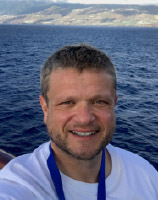
The laboratory of Dr. Mark Hauber is interested in the mechanisms and consequences of host-parasite interactions. The Hauber Lab studies brood parasitic birds, which lay their eggs in other birds nests and avoid the costs of parental care for their own young. How does a young parasite recognize its own species when raised by foster parents, and why do some (but not other) hosts accept the foreign, parasitic eggs in their nests? PRECS participants will be exposed to field work on wild birds and laboratory studies of captive animals, through techniques spanning neurophysiology, fMRI, transcriptomics, endocrinology, and behavioral experimentation. These techniques will be used to answer hypothesis-driven questions about the proximate and ultimate causes of host-parasite interactions and their neurobiological bases.
Dr. Katy Heath
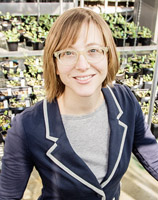
Dr. Katy Heath and her group integrate genomic techniques into evolution and ecology to answer questions about mutualism evolution, plant responses to climate change, and microbial community assembly. In one project, they are studying how rhizobium bacteria, nitrogen-fixing symbionts that inhabit the root nodules of leguminous plants, respond to changes in soil nitrogen availability. These responses include evolutionary changes – i.e., changes in the genetic composition of the populations over time. The PRECS participant will study the plastic responses of rhizobium traits, including nitrogen-fixation, nodulation, and effects on plant growth and fitness, across nitrogen environments.
Dr. Sarah Hind
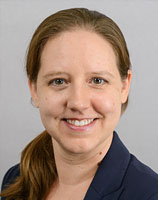
Dr. Sarah Hind’s research is focused on understanding the plant immune system, with a current emphasis on bacterial pathogens of vegetable crops. Ongoing projects in the laboratory study the causal agents of bacterial spot disease of Solanaceae (tomato) and Cucurbitacea (pumpkin) plants, which are responsible for annual crop losses in Illinois. PRESC participants will use molecular, microbiological, and biochemical methods to investigate virulence-related genes in order to better control this devastating disease.
Dr. John Juvik

Dr. John Juvik’s research program has focused on breeding vegetables for improved flavor, insect and disease resistance and for enhanced levels of phytochemicals associated with health promotion. His program has pioneered the use of DNA markers for the creation of linkage maps of tomatoes, sweet corn, broccoli and more recently for the bioenergy crop, Miscanthus. These maps have been used for the identification of favorable QTLs and for marker-assisted introgression of beneficial alleles for improved quality, yield, and other traits into elite germplasm for commercial release. Most recently he is working in collaboration with the Kraft Heinz Food Company on a project investigating the feasibility of using pigments from corn as natural colorants in processed foods and beverages. The PRECS participant will investigate the genetics of anthocyanin accumulation in maize and the potential role of anthocyanins in health promotion.
Dr. Andrew Margenot

The research team led by Dr. Andrew Margenot seeks to optimize the utilization of a non-renewable resource critical to food security: soil. One of our research objectives is to untangle the complex interplay of the abiotic and biotic: how do soil conditions influence plant recruitment of and reliance on symbiotic microorganisms to obtain nutrients? For example, arbuscular mycorrhizal fungi (AMF) form symbiosis with 80% of plant species, but AMF help shape plant growth in the face of abiotic stress is not fully understood. The PRECS researcher will employ a tomato-AMF genetic model to test how plant-AMF mutualisms enable plants to adapt to differing geochemical challenges (phosphorus deficiency, heavy metal contamination) using a combination of biogeochemistry and soil biology tools.
Dr. Amy Marshall-Colon

Dr. Amy Marshall-Colon seeks to understand the regulatory mechanisms that control nitrogen uptake and assimilation by plants. Nitrogen is an essential nutrient for plant growth and development, and increasing plant nitrogen use efficiency has important implications for crop yield and environmental health. The Marshall-Colon lab uses a systems biology approach to predict what genes have an important role in nitrogen uptake and assimilation, and then tests those predictions using transcriptomics and metabolomics. The PRECS participant will investigate candidate gene function using dry bench (bioinformatics) and/or wet bench (molecular biology) approaches.
Dr. Santiago Mideros

The laboratory of Dr. Santiago Mideros studies the mechanisms used by fungal plant pathogens of field crops to cause disease and reduce yield. In my laboratory, we use quantitative PCR, microscopy, and high-throughput field assays to characterize the phenotypic interactions; and microbiome sequencing, RNAseq, and genetics to identify the factors involved in the interactions. We have demonstrated that virulence factors in one maize pathogen are genetically linked with the ability of the pathogen to grow in vitro. A complete understanding of the environmental and host effects on the pathogen is necessary to develop novel and more resistant varieties. The PRECS participant will characterize the phenotypes of plant pathogenic fungal populations in laboratory and greenhouse experiments, using light microscopy and molecular genetic tools. The project will aim to identify fungal genes responsible for the variations in phenotypes under different environmental conditions.
Dr. Michael Miller

Dr. Michael Miller is interested in the relationship between gut microbiota and host health, with a current emphasis on understanding how microbial metabolism of dietary bioactives contributes to disease prevention. We exploit interindividual variation in gut microbiota composition and function to identify the source of bioactive metabolism so that dietary interventions can be designed for optimal health. The bioactives of greatest interest in the Miller lab are glucosinolates from crucifers and phytoestrogens from soy. The PRECS participant will use a combination of bioinformatics and microbiology to tackle novel questions in this area.
Dr. Esther Ngumbi

The laboratory of Dr. Esther Ngumbi studies the multifaceted uses of chemical signals by herbivores, natural enemies, plants and their associated microorganisms. The PRECS participant will examine the effect of herbivory on plant volatile production in multitrophic interactions with microorganisms.
Dr. Chance Riggins

Dr. Chance Riggins conducts interdisciplinary research in plant evolution and utilization. Ongoing projects in the Riggins laboratory intersect these topics through work on various wild, weedy, and domesticated plant species, although most recent work focuses on species of the genus Amaranthus. As agricultural weeds, certain amaranth species are appealing models for studies of rapid adaptive evolution that can occur in agricultural settings via unintentional human-mediated selection. The ability to thrive in new environments and climatic conditions, cope with ever-changing weed management regimes, and rapidly evolve resistance to new herbicide modes of action are but a few examples of adaptation in amaranth weed species. With the exception of herbicide resistance in some cases, the genetics underlying adaptive evolution in these species remain largely uncharacterized. PRECS participants will be exposed to a variety of laboratory, bioinformatics, and greenhouse-based techniques in order to investigate novel questions about how agricultural weeds originate and adapt.
Dr. Gene Robinson
 The laboratory of Dr. Gene Robinson is interested in the molecular basis of social behavior, with a current emphasis on understanding how changes in brain metabolism affect aggression and how specific transcription factors work to "rewire" transcriptional regulatory networks to produce different behaviors. The PRECS participant will use a combination of social behavior manipulations and molecular biology to tackle novel questions in these areas.
The laboratory of Dr. Gene Robinson is interested in the molecular basis of social behavior, with a current emphasis on understanding how changes in brain metabolism affect aggression and how specific transcription factors work to "rewire" transcriptional regulatory networks to produce different behaviors. The PRECS participant will use a combination of social behavior manipulations and molecular biology to tackle novel questions in these areas.
Dr. Nathan Schroeder
 The laboratory of Dr. Nathan Schroeder is interested in the molecular basis of neuronal remodeling following exposure to environmental stress. The Schroeder laboratory uses the model organism Caenorhabditis elegans to dissect the mechanisms regulating dendrite arborization during the stress-induced ‘ dauer’ stage of C. elegans. During the dauer stage, a set of sensory neurons undergo extensive arborization leading to a 3-4 fold increase in total dendritic length within 12 hours. Upon a return to favorable environmental conditions, animals will recover from dauer and display a rapid resorption of dendritic processes. The PRECS participant will use a combination of light microscopy and molecular biology to elucidate the role of the extracellular matrix in neuron remodeling during the stress-induced dauer stage of C. elegans.
The laboratory of Dr. Nathan Schroeder is interested in the molecular basis of neuronal remodeling following exposure to environmental stress. The Schroeder laboratory uses the model organism Caenorhabditis elegans to dissect the mechanisms regulating dendrite arborization during the stress-induced ‘ dauer’ stage of C. elegans. During the dauer stage, a set of sensory neurons undergo extensive arborization leading to a 3-4 fold increase in total dendritic length within 12 hours. Upon a return to favorable environmental conditions, animals will recover from dauer and display a rapid resorption of dendritic processes. The PRECS participant will use a combination of light microscopy and molecular biology to elucidate the role of the extracellular matrix in neuron remodeling during the stress-induced dauer stage of C. elegans.
Dr. Andrew Steelman
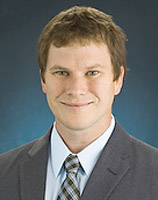
Dr. Andrew Steelman’s research is focused on understanding detrimental and repair-promoting signaling pathways resulting from neuroinflammation and glial activation so they can be modulated in such a way as to achieve a beneficial outcome for those suffering with neurological diseases. My specific area of interest is brain inflammation (encephalitis). A major line of our current research is focused on multiple sclerosis. We are particularly interested in uncovering how upper-respiratory viral infection, exacerbates symptoms of this disease. Another emerging aspect of our research is focused on uncovering detrimental vs. repair promoting responses that occur during viral encephalitis. The PRECS participant will use conditional knockout mice to investigate the role of an intracellular signaling molecule on immune cell trafficking to the brain.
Dr. Tony Studer
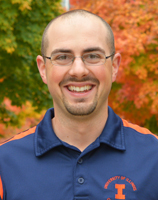
Dr. Tony Studer’s lab studies ways to improve the efficiency and productivity of cereal crops by optimizing photosynthesis and water use. The long-term goal of the Studer lab is to develop crops that are resilient to climate change and meet the needs of growers at the regional, national, and international levels. There are several projects in the lab that use interdisciplinary approaches including genetics, genomics, bioinformatics, molecular biology, evolutionary biology, and plant physiology. Students from the PRECS program will have the opportunity to carry out a research project that blends these disciplines in both a laboratory and field setting under the guidance of Dr. Studer and a graduate student from the lab.
Dr. Chris Taylor

Dr. Chris Taylor's lab works on all aspects of freshwater crayfish biology, including analyses of ecological requirements, conservation, taxonomy, and evolutionary history. The PRECS participant will examine the current distribution of what is believed to be an invasive crayfish species (the Virile Crayfish) in the Current River of Missouri. Field sampling for this project will be conducted in the Ozark National Scenic Riverway of Missouri and will involve field collection of crayfish specimens and an investigation into the utility of using environmental DNA (eDNA) for the detection of this invasive species. The project could involve an examination and comparison of the morphologies of Virile Crayfish specimens from the Current River and from adjacent habitats within its native range. The PRECS student would participate in field trips to Current River during the months June and July and would be exposed field sampling techniques. He or she would also be exposed to laboratory techniques for the measurement and recording of morphological data.
Dr. Anthony Yannarell
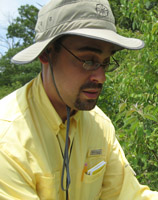 Dr. Anthony Yannarell is a microbial ecologist who studies the links between plant communities and soil microbial communities. His research uses DNA-based tools to characterize the diversity of bacteria and fungi “in the wild” in order to understand how different plants shape the soil microbial community and how the soil microbes, in turn, affect plant health. He hopes to learn how plant-microbe interactions can help us conserve native plant communities, boost agricultural production and sustainability, and manage populations of invasive and weedy plant species. The PRECS participant will study the plastic responses of plants exposed to different kinds of soil microorganisms and to sterile growth conditions.
Dr. Anthony Yannarell is a microbial ecologist who studies the links between plant communities and soil microbial communities. His research uses DNA-based tools to characterize the diversity of bacteria and fungi “in the wild” in order to understand how different plants shape the soil microbial community and how the soil microbes, in turn, affect plant health. He hopes to learn how plant-microbe interactions can help us conserve native plant communities, boost agricultural production and sustainability, and manage populations of invasive and weedy plant species. The PRECS participant will study the plastic responses of plants exposed to different kinds of soil microorganisms and to sterile growth conditions.
